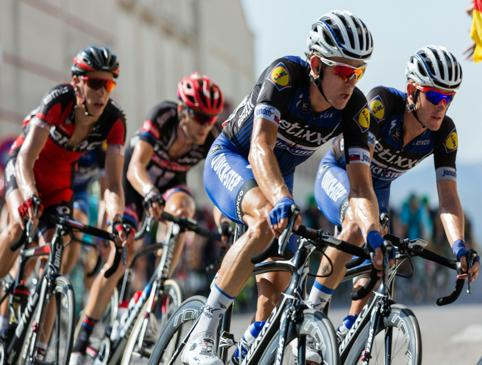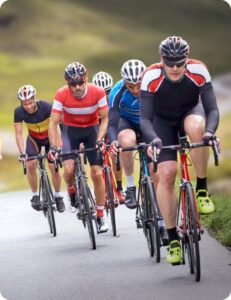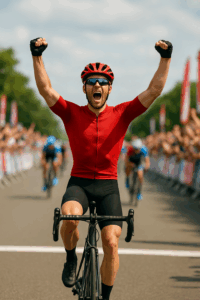What Should I Look for in a Sports Nutritionist for a Competitive Cyclist?

Not all nutritionists specialize in cycling. So how do you choose a sports nutritionist for competitive cyclists who truly understands the demands of endurance riding?
Whether you’re training for a century ride, gravel ride, racing criteriums, or tackling long-distance stage events, your nutrition strategy can determine how well you perform. Cycling demands precision – the right fuel, hydration, and recovery can make the difference between a strong finish and hitting the wall.
What to Look for:
1. Look for Strong Credentials and Licensure
Start with qualifications. A reputable sports nutritionist should hold an advanced degree in nutrition or dietetics and be a Registered Dietitian (RD/RDN) or Licensed Dietitian/Nutritionist (LD/LDN).
For athletes, the gold standard is a practitioner who has extensive experience with elite and endurance athletes. They should be trained in clinical and sports-specific nutrition – essential for developing evidence-based fueling and recovery plans that protect long-term health while maximizing performance.
2. Choose Someone Who Specializes in Endurance and Cycling Performance

Cycling isn’t just another endurance sport. It requires sustained power output, precise energy management, and strategic fueling over hours of training or competition.
Look for a nutritionist who specializes in endurance athletes, particularly cyclists and triathletes. These professionals understand how power output, sweat rate, and glycogen depletion affect performance. They can design personalized fueling strategies that match your body’s energy demands – helping you sustain consistent power and speed throughout your rides.
If you want to see what personalized cycling nutrition looks like, book an Introductory Session and start optimizing your training today.
3. Ask About Experience with Competitive Cyclists
Experience matters as much as credentials. The best sports nutritionists have worked directly with cyclists competing at various levels – from local time trials to gravel rides to Ironman triathlons.
A nutritionist with hands-on experience understands how to plan race-day fueling, hydration protocols, and recovery meals tailored to long training blocks, altitude changes, and multi-day events. This real-world perspective ensures your plan works not just on paper, but in the peloton and on the road.
4. Expect a Data-Driven, Athlete-Focused Approach
Elite performance depends on details. A knowledgeable sports nutritionist will use measurable data – such as metabolic testing, body composition, and sweat rate analysis – to develop an individualized plan.
Look for someone who collaborates with your coach or performance team to integrate nutrition seamlessly into your training program. The best plans are dynamic and evolve with your training load, goals, and race calendar.
5. Prioritize Long-Term Health Alongside Performance

A strong cycling nutrition program supports both short-term gains and long-term wellness. Your nutritionist should monitor key markers like energy availability, iron status, and hormone balance to prevent overtraining and ensure consistent recovery.
Sustainable performance comes from fueling smarter, not just harder – keeping you healthy, energized, and competitive throughout the season.
Ready to Take Your Cycling Performance to the Next Level?

If you’re ready to refine your fueling, hydration, and recovery strategy, start with a personalized Introductory Session. You’ll get expert feedback on your current approach and actionable steps to boost performance and endurance.
For more practical guidance, read my companion article:
👉 Nutrition for High-Performance Cycling
Key Takeaway
When choosing a sports nutritionist for cycling, look for:
-
Verified credentials (RD/RDN, CSSD, LD/LN)
-
Specialization in endurance athletes
-
Direct experience with competitive cyclists
-
A data-driven, individualized approach
-
Focus on performance and long-term health
With the right sports nutritionist, you’ll have the tools to fuel more efficiently, recover faster, and ride stronger – mile after mile.
